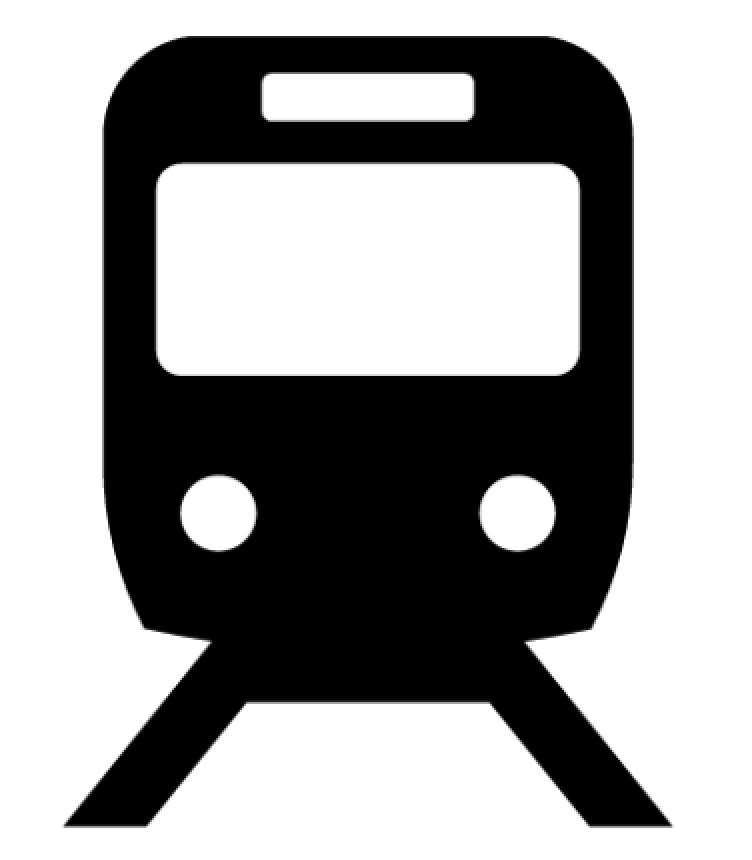|
grahame
|
 |
« Reply #30 on: July 25, 2013, 22:27:01 » |
|
And that second vehicle has a heavy diesel engine it, which probably means a higher centre of gravity. If so, then that explains why it is the first vehicle to tip.
It's been suggested that the Salisbury accident of 1906 in which a train went around the corner too fast would not have happened if the locomotive had been an older one with a lower centre of gravity been pulling the train (ref: O S Nock - Historic Railway Disasters and L T C (Tom) Rolt - Red for Danger). |
|
|
|
|
 Logged
Logged
|
Coffee Shop Admin, Chair of Melksham Rail User Group, TravelWatch SouthWest Board Member
|
|
|
|
broadgage
|
 |
« Reply #31 on: July 26, 2013, 09:01:15 » |
|
Accidents of this nature beg the question as to how many trains have previously taken the curve at excessive speeds and JUST got away with it.
If the train in the recent disaster took the curve at say 180KPH with tragic consequences, was this a one off error (momentry lapse of attention by driver who perhaps mistook his location) or had exceeding the speed limit become common practice, perhaps with other trains taking the curve at say 160KPH and JUST getting away with it.
In the UK▸ speed limits are strictly enforced with drivers at risk of dismissal for all but the most trivial breaches.
This is however fairly recent, I can remember trains routinely exceeding speed limits, was there not a "140 club" years ago of those HST▸ drivers who had reached 140 MPH.
SLIGHTLY exceeding the limit is most unlikely to result in an accident, there is a considerable safety margin. The real risk comes when speeding becomes the "new normal" and actual speeds very gradualy creep up to substantial excess speed.
If driver ABC has taken a curve at 100MPH without accident, then driver XYZ might be tempted to try 102MPH, and so on.
|
|
|
|
|
 Logged
Logged
|
A proper intercity train has a minimum of 8 coaches, gangwayed throughout, with first at one end, and a full sized buffet car between first and standard.
It has space for cycles, surfboards,luggage etc.
A 5 car DMU▸ is not a proper inter-city train. The 5+5 and 9 car DMUs are almost as bad.
|
|
|
|
stuving
|
 |
« Reply #32 on: July 26, 2013, 09:19:07 » |
|
This is all new track. Surely any modern signalling system records the train speed, at least at every balise, and (with radio) in the fixed system as well as the train?
|
|
|
|
|
 Logged
Logged
|
|
|
|
|
broadgage
|
 |
« Reply #33 on: July 26, 2013, 09:47:40 » |
|
Media reports suggest that although relatively new, that this track was not equiped with ETRMS or any equivalent system.
In which case it would have no protection against accidental or intentional overspeed.
|
|
|
|
|
 Logged
Logged
|
A proper intercity train has a minimum of 8 coaches, gangwayed throughout, with first at one end, and a full sized buffet car between first and standard.
It has space for cycles, surfboards,luggage etc.
A 5 car DMU▸ is not a proper inter-city train. The 5+5 and 9 car DMUs are almost as bad.
|
|
|
|
ChrisB
|
 |
« Reply #34 on: July 26, 2013, 11:15:54 » |
|
I think it was only the HSR track that was new - that train had just left the new track for the old....
|
|
|
|
|
 Logged
Logged
|
|
|
|
|
stuving
|
 |
« Reply #35 on: July 26, 2013, 11:35:08 » |
|
As I see it, this was new track built on an existing alignment that was widened to make room for it. It only goes to/from the HS▸ line one way, but joins the other lines approaching the station. So it's moot if its a bit of HS line with a low speed limit, or a completely rebuilt old line as a link to the HS line. I prefer the former version. Either way it's new and its signalling must be too.
|
|
|
|
|
 Logged
Logged
|
|
|
|
|
JayMac
|
 |
« Reply #36 on: July 26, 2013, 18:16:56 » |
|
The curve in question comes after many miles of straightish running over newly built dedicated high speed track. The new line was signalled with ETCS▸ (European Train Control System) to a boundary point somewhere prior to the curve, where the signalling system switches to ASFA, Spain's near equivalent of the UK▸ 's TPWS▸ . I've watched an in-cab video of a train traversing the same stretch of line at the correct speed, but I don't know enough about Spanish signalling to work out where the demarcation point between modern and legacy signalling is. The new line joins the old part way round the curve. That video can been seen here: http://www.youtube.com/watch?v=QvvvL3OTtXk (You'll need to switch to 480p or 720p as the default 360p doesn't seem to work) Forward that video to around the 31 minute mark to see the approach to the curve. |
|
|
|
« Last Edit: July 26, 2013, 18:22:02 by bignosemac »
|
 Logged
Logged
|
"Good news for regular users of Euston Station in London! One day they will die. Then they won't have to go to Euston Station ever again." - David Mitchell
|
|
|
|
Chris from Nailsea
|
 |
« Reply #37 on: July 27, 2013, 00:03:08 » |
|
Another update, from the BBC» : Spain train crash: Driver Garzon declines to give evidence Train driver Francisco Jose Garzon Amo is helped by a policeman after a train crashed near Santiago de Compostela, 24 July 2013. Train driver Francisco Jose Garzon Amo is helped by a policeman after a train crashed near Santiago de Compostela, 24 July 2013.The driver of the train that derailed killing 78 people has refused to answer initial questions, Spanish police say. Francisco Jose Garzon Amo - hurt in Wednesday's crash - is under guard in hospital. He is suspected of driving too fast round a bend. Reports say the train was travelling at more than double the speed limit at the time of the crash. The case should now "proceed to a judicial process", the police added. Spain is in three days of mourning. The police chief in the Galicia region, Jaime Iglesias, said earlier that the driver would be questioned "as a suspect for a crime linked to the cause of the accident". No date has been fixed for his appearance before the judge, a spokeswoman for Galicia's High Court, which is leading the investigation, told the AFP news agency. |
|
|
|
|
 Logged
Logged
|
William Huskisson MP▸ was the first person to be killed by a train while crossing the tracks, in 1830. Many more have died in the same way since then. Don't take a chance: stop, look, listen.
"Level crossings are safe, unless they are used in an unsafe manner." Discuss.
|
|
|
|
Electric train
|
 |
« Reply #38 on: July 27, 2013, 08:32:47 » |
|
The curve in question comes after many miles of straightish running over newly built dedicated high speed track. The new line was signalled with ETCS▸ (European Train Control System) to a boundary point somewhere prior to the curve, where the signalling system switches to ASFA, Spain's near equivalent of the UK▸ 's TPWS▸ . I've watched an in-cab video of a train traversing the same stretch of line at the correct speed, but I don't know enough about Spanish signalling to work out where the demarcation point between modern and legacy signalling is. The new line joins the old part way round the curve. That video can been seen here: http://www.youtube.com/watch?v=QvvvL3OTtXk (You'll need to switch to 480p or 720p as the default 360p doesn't seem to work) Forward that video to around the 31 minute mark to see the approach to the curve. I watched that vid through, there does not seem to be any fixed colour light signals until well past the accident site, I can only assume there is in cab signalling but it cannot be a speed controlling type of signalling whereby the system stops the train if the drive exceeds to max speed |
|
|
|
|
 Logged
Logged
|
Starship just experienced what we call a rapid unscheduled disassembly, or a RUD, during ascent,”
|
|
|
Red Squirrel
Administrator
Hero Member
    
Posts: 5469
There are some who call me... Tim

|
 |
« Reply #39 on: July 27, 2013, 09:44:13 » |
|
...That video can been seen here: http://www.youtube.com/watch?v=QvvvL3OTtXk (You'll need to switch to 480p or 720p as the default 360p doesn't seem to work) Forward that video to around the 31 minute mark to see the approach to the curve. I found watching that as horrifying as the video of the accident - the topography of the area where the train came off the rails couldn't have been much worse. |
|
|
|
|
 Logged
Logged
|
Things take longer to happen than you think they will, and then they happen faster than you thought they could.
|
|
|
|
stuving
|
 |
« Reply #40 on: July 27, 2013, 11:32:25 » |
|
I watched that vid through, there does not seem to be any fixed colour light signals until well past the accident site, I can only assume there is in cab signalling but it cannot be a speed controlling type of signalling whereby the system stops the train if the drive exceeds to max speed
So, the emerging picture is that the new line uses ETCS▸ ( ERTMS▸ ) which can provide full supervision of train speed. But does it have to? It can operate as an in-cab signalling system using only inputs from train and track, so I presume the reverse link to the train to apply the brakes is a mode that can be omitted. There are still some "why did/didn't they" questions. It seems the handover from ETCS to AFSA was 4 km back from the curve, just before the braking point at 0.05 g. I'm sure ETCS would signal this braking where the restriction is after the handover, but only if the braking starts before it. Why put the boundary there, when braking from straight high-speed line to a low speed curve has to come near the top of any risk assessment? And some plain puzzles ... e.g. ERTMS say that all AVE lines were switched to level 2 (no lineside signals) in 2012*, whereas this one was opened in 2011 and, if it has no signals, clearly used level 2 from the start. I also wondered why the old and very wiggly Spanish gauge line from Ourense, that joins the AVE line from the left at the curve, was of the same gauge. It turns out this AVE line was built to 1.668 m and will be converted later! These trains also go through a "drive-thru" gauge-changer near Valladolid, having left Madrid on a (1.435 m) AVE line, and before joining the existing line to Ourense. Spanish rail engineering is indeed unlike our own in many ways. (* Correction - I missed that they (UNIFE http://www.ertms.net/media/2434/ertms%20facts%20sheet%205%20-%20ertms%20deployment%20in%20spain.pdf) say the first was opened in 2011, which may have been this line.) |
|
|
|
« Last Edit: August 03, 2013, 14:21:32 by stuving »
|
 Logged
Logged
|
|
|
|
|
Gordon the Blue Engine
|
 |
« Reply #41 on: July 27, 2013, 11:55:38 » |
|
In the UK▸ speed limits are strictly enforced with drivers at risk of dismissal for all but the most trivial breaches.
This is however fairly recent, I can remember trains routinely exceeding speed limits, was there not a "140 club" years ago of those HST▸ drivers who had reached 140 MPH.
I'm not sure that's true Broadgage. I was around when HST's came in on the Western region in1976, and I recall they all had speed limiters either from the outset of public service runs or very soon after which prevented them doing more than about 130 mph. It maybe that early driver training runs etc pre-dated the speed limiters. I do remember doing 110 mph behind a Class 50 between Didcot and Reading: unlike Class 47's, which ran out of power above about 80-85 mph, Class 50's could really go! |
|
|
|
|
 Logged
Logged
|
|
|
|
|
Electric train
|
 |
« Reply #42 on: July 27, 2013, 12:57:17 » |
|
I watched that vid through, there does not seem to be any fixed colour light signals until well past the accident site, I can only assume there is in cab signalling but it cannot be a speed controlling type of signalling whereby the system stops the train if the drive exceeds to max speed
So, the emerging picture is that the new line uses ETCS▸ ( ERTMS▸ ) which can provide full supervision of train speed. But does it have to? It can operate as an in-cab signalling system using only inputs from train and track, so I presume the reverse link to the train to apply the brakes is a mode that can be omitted. There are still some "why did/didn't they" questions. It seems the handover from ETCS to AFSA was 4 km back from the curve, just before the braking point at 0.5 g. I'm sure ETCS would signal this braking where the restriction is after the handover, but only if the braking starts before it. Why put the boundary there, when braking from straight high-speed line to a low speed curve has to come near the top of any risk assessment? And some plain puzzles ... e.g. ERTMS say that all AVE lines were switched to level 2 (no lineside signals) in 2012*, whereas this one was opened in 2011 and, if it has no signals, clearly used level 2 from the start. I also wondered why the old and very wiggly Spanish gauge line from Ourense, that joins the AVE line from the left at the curve, was of the same gauge. It turns out this AVE line was built to 1.668 m and will be converted later! These trains also go through a "drive-thru" gauge-changer near Valladolid, having left Madrid on a (1.435 m) AVE line, and before joining the existing line to Ourense. Spanish rail engineering is indeed unlike our own in many ways. (* Correction - I missed that they (UNIFE http://www.ertms.net/media/2434/ertms%20facts%20sheet%205%20-%20ertms%20deployment%20in%20spain.pdf) say the first was opened in 2011, which may have been this line.) It seems to be a Level 2 system which I think is in cab signalling I am not sure how much the signalling system can override the drive (anymore than our AWS▸ and TPWS▸ ) does now Likny to ETRMS http://www.ertms.net/ertms/ertms-signalling-levels.aspx |
|
|
|
|
 Logged
Logged
|
Starship just experienced what we call a rapid unscheduled disassembly, or a RUD, during ascent,”
|
|
|
|
stuving
|
 |
« Reply #43 on: July 27, 2013, 13:17:20 » |
|
There's a longer version at http://www.ertms.net/media/2428/ertms%20facts%20sheet%203%20-%20ertms%20levels.pdf, where it says this: ERTMS▸ level 1 is designed as an add-on to or overlays a conventional line already equipped with lineside signals and train detectors. Communication between the tracks and the train are ensured by dedicated balises (known as ^Eurobalises^) located usually on the trackside adjacent to the lineside signals at required intervals, and connected to the train control centre. Receiving the movement authority through Eurobalises, the ETCS▸ onboard equipment automatically calculates the maximum speed of the train and the next braking point if needed, taking into account the train braking characteristics and the track description data. This information is displayed to the driver through a dedicated screen in the cabin. The speed of the train is continuously supervised by the ETCS onboard equipment.
The main benefits brought by ERTMS Level 1 are interoperability (between projects and countries) and safety, since the train will automatically brake if exceeding the maximum speed allowed under the movement authority. I presume that last statement goes for levels 2 and 3 as well. But, as I said, the link to the train that applies the brake is not required for signalling, and probably needs a specific interface box, so I could believe it is sometimes absent even with an ETCS level 1 or 2. So you get a cab display with level 1, but it appears that it does not replace signals, it adds speed advice. |
|
|
|
« Last Edit: August 22, 2013, 22:15:09 by stuving »
|
 Logged
Logged
|
|
|
|
|
stuving
|
 |
« Reply #44 on: July 27, 2013, 13:36:38 » |
|
Oh, and should have said yes - ETCS▸ level 2 does give in-cab signalling, and in ERTMS▸ level 2 uses GSM-R▸ as its radio link. I note the words say "does not require lineside signals" - but do not spell out how things work for lines with multiple on-board systems. I see that several lines are described (elsewhere) as "level 1/2" - I wonder what that means (possibly more than one kind of mixture?).
|
|
|
|
« Last Edit: August 22, 2013, 22:17:58 by stuving »
|
 Logged
Logged
|
|
|
|
|





